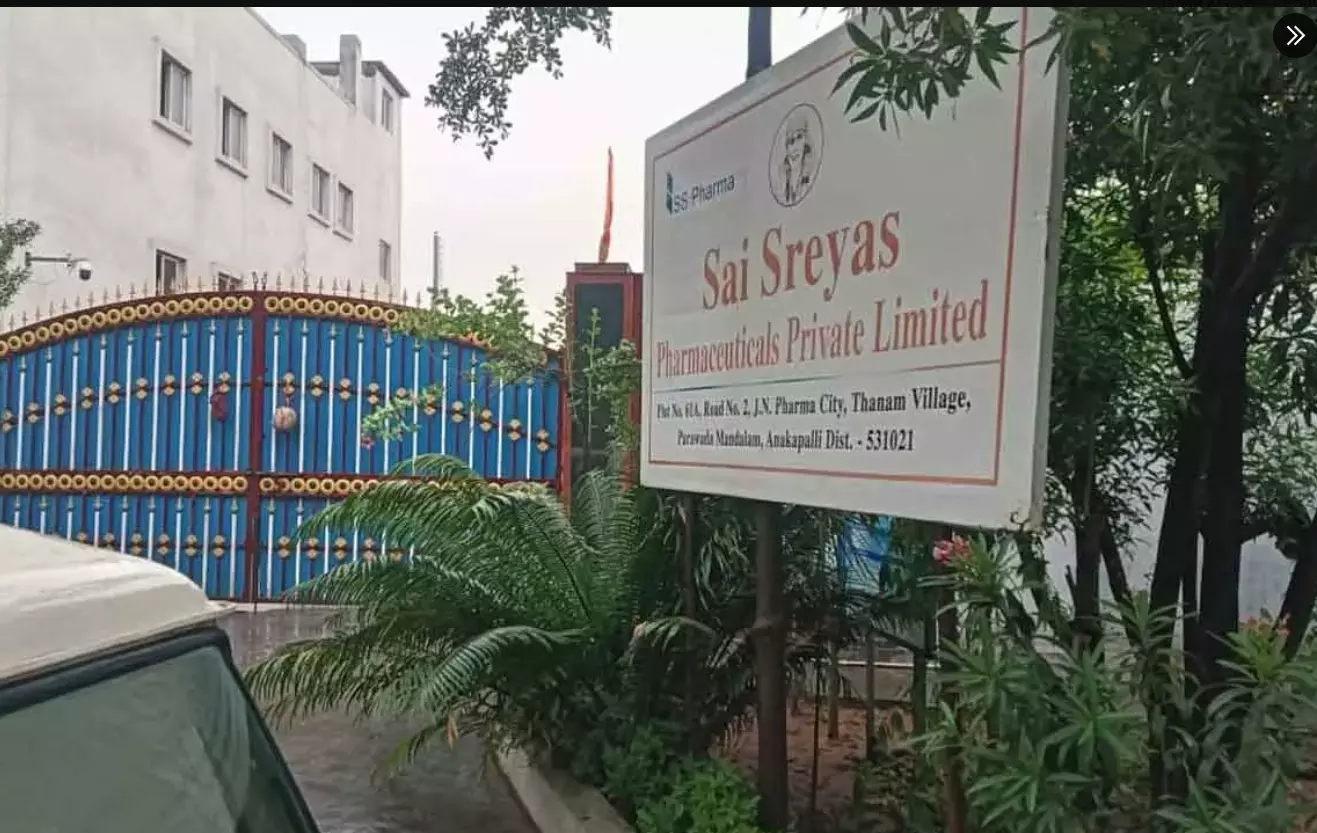Fatal Gas leak: APPCB Halts Sai Sreyas Pharma Operations
The Andhra Pradesh Pollution Control Board (APPCB) issued a stop production order (SPO) to the company, citing unauthorised air emissions: Reports

VISAKHAPATNAM: The fatal gas leak at Sai Sreyas Pharmaceuticals Pvt. Ltd. in Jawaharlal Nehru Pharma City (JNPC), located in Parawada, Visakhapatnam, has triggered a wave of concern and scrutiny after two safety personnel died and one was critically injured during a late-night effluent neutralisation operation on June 12.
In response, the Andhra Pradesh Pollution Control Board (APPCB) issued a stop production order (SPO) to the company, citing unauthorised air emissions. The Board claimed it began “continuous monitoring” of volatile organic compounds (VOCs) around the premises. However, data in the SPO reveals only two discrete monitoring instances using portable analysers on the day of the incident, casting doubt on the claim of sustained surveillance.
The company attributed the deaths to hydrogen sulphide (H₂S) exposure, but this explanation has been met with scepticism. A group of scientists under the banner Scientists for People, comprising Dr K. Babu Rao, Dr K. Venkat Reddy, Dr D. Rambabu, and Dr K. Koteswara Rao, have raised critical questions about the accident’s timeline, chemical processes, and regulatory response.
They questioned the urgency of conducting effluent neutralisation at midnight using only safety personnel, without the presence of trained process staff. The company’s claim that one of the victims, Chandrasekhar, entered the area voluntarily has also been challenged, especially given the absence of a clear standard operating procedure (SOP) for such operations.
The scientists demanded clarity on whether the SOP accounted for the possibility of H₂S formation and what safety measures were in place to mitigate this risk. They also questioned why H₂S levels were not measured at 7 am, despite high VOC readings at that time, and called for a scientific explanation of the chemistry behind H₂S generation.
Further, they urged the release of the autopsy report to confirm whether the physiological effects observed align with H₂S poisoning. The presence of chemicals in the effluent that could react with NaOH to produce H₂S remains unverified.

